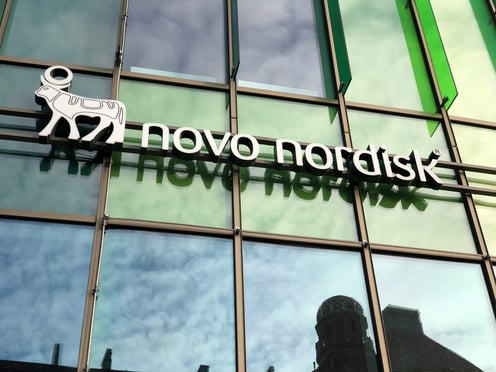Typically when you hear the word “wellness,” you immediatelythink about physical health and well-being. But financial health is anotheraspect of wellness that is frequently overlooked, yet equallyimportant, and needs to be considered by employers. After all,financial stress does impact employee’s physical wellness andhealth.
|The 2016 Employee Financial Wellness Surveyconducted by PwC shows 40 percent of all employees surveyed find itdifficult to meet their monthly household expenses. What, exactly,are they concerned about? Included in the list:
|(1) not having enough emergency savings;
|(2) not being able to retire;
|(3) not meeting monthly expenses;
|(4) being laid off; and
|(5) increased debt
|Even knowing these financial concerns, though, employers do notalways know how to alleviate the personal impact they may have onan employee’s life. These financial concerns are brought into theworkplace, causing general distractions and stress that can leadfrom everything to everything from increased blood pressure todepression. In turn, these conditions can cause absenteeism, wage garnishments,disability/workers compensation claims, or substance abuse and eventheft. This can impact the business’ profitability, decreaseemployee productivity, and increase health insurance rates,overtime, and employee turnover.
|Trusted advisors are in a position to work with employers tocreate a strategic financial wellness plan which offers awell-rounded benefit package relevant to the needs of attractingand retaining employees. This starts with understanding the companyphilosophy. An advisor can help an employer understand thecorrelation between what financial concerns employees are stressedabout and how it will holistically affect both the employee and theemployer.
|By helping the employer move towards a corporate philosophyfocused on employees’ well-being, the benefit advisor can thenbegin to establish the framework for the structure of a financialwellness plan to meet that philosophy.
|One size doesn’t fit all In determining thecomponents of the financial wellness plan, benefit advisors canalso help their employers think strategically — and not only aboutthe employee’s top concerns noted above. Ask questions such as, “Isthe company paying competitively?” Or, “Is the company in a growthor down-sizing mode?” Also, understanding the workforce make-upwill help establish criteria within the plan; for example, knowingthat white-collar workers traditionally have more student loans andthat they are more likely to not invest in retirement until debtsare paid off and that blue-collar workers are prone to forgo 401(k)investments entirely.
||While many companies want to mirror what the big boys likeFacebook, Netflix and Google are doing, it may not be practical fortheir particular industry or culture. It is good to watch whatothers are doing; however, identifying the culture and needs ofboth a company and its employees will help to build a tailored planthat works specifically for them.
|Create measurable outcomes Another piece of thepuzzle is to know both the employer and employee objectives. Forthe employer, these are often geared toward ROI and might includereduced health care costs, turnover and absenteeism. Theseare hard dollar costs that can be measured. Outcomes the employeeswould derive could include reduced credit card debt and health carecosts, and increased savings and retirement funds. Coordinate theseoutcomes into deliverables through 401(k)s, health care plans, andleave policies, including disability and workers compensationprograms. The advisor should also be sure to inform the employer ofany required state laws or compliance requirements.
|Maintaining a financial wellness programEducating and motivating employees on a consistent basis is anotherpiece of the puzzle. What tools and resources do your currentvendors bring to the table? Do your vendors offer on-line training,apps to track spending, or rewards for achievements? Maximizevendor services for best results.
|What will the rollout of your plan look like? Many programs dieout quickly due to lack of buy-in and consistent long-termcommunication at all levels. Educate your employers touse the financial wellness program as part of their employeecommunication toolkit. It takes time and consistency to build up ahabit of use. Buy-in and promotion of the plan needs to be at alllevels within the company to ensure sustainability.
|Most importantly, help employer clients create perpetuation of afinancial wellness plan. Trusted advisors canhelp with establishing analytics to monitor both company andemployee progress. This way, objectives are all measureable.Advisors will be in a position to help employers tweak programswhere needed, and establish a rewards system when milestones arereached.
Complete your profile to continue reading and get FREE access to BenefitsPRO, part of your ALM digital membership.
Your access to unlimited BenefitsPRO content isn’t changing.
Once you are an ALM digital member, you’ll receive:
- Critical BenefitsPRO information including cutting edge post-reform success strategies, access to educational webcasts and videos, resources from industry leaders, and informative Newsletters.
- Exclusive discounts on ALM, BenefitsPRO magazine and BenefitsPRO.com events
- Access to other award-winning ALM websites including ThinkAdvisor.com and Law.com
Already have an account? Sign In
© 2024 ALM Global, LLC, All Rights Reserved. Request academic re-use from www.copyright.com. All other uses, submit a request to [email protected]. For more information visit Asset & Logo Licensing.








